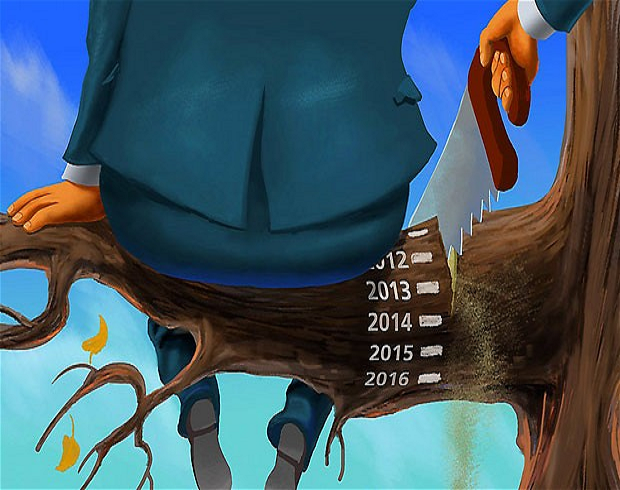[vc_row][vc_column width=”2/3″][vc_column_text]I spent the better part of last week down in Mombasa and arrived at three conclusions: firstly, devolution works. Secondly, banking, as we know it in Kenya will have to change or it will die. Thirdly, the ghosts of the Indian Ocean piracy rackets roam freely in Mombasa’s environs.
My visit to Mombasa was primarily to see the market and the distribution of a particular fast moving consumer good (FMCG) that I will hereafter refer to as product X. Since devolution shifted a hitherto unknown sum of money to the coastal counties, there was more money in circulation, as county governments became direct buyers of goods and services within counties. Of course the providers of those goods and services then have more cash with which to hire employees or buy supplies both of which activities means that funds are moving further down the food chain. Employees, for example, now have cash with which to pay rent, buy food and clothing items as well as not-so- discretionary items like airtime. Suppliers of biros, wheelbarrows or condom dispensers to the county governments have to purchase them from a wholesaler, or perhaps a supermarket and more funds go into the system. You catch my drift, I’m sure. Anyway, movement of product X (and many other FMCGs) has grown in the last two years since devolution occurred simply because there’s more cash in circulation. Now how that cash gets into circulation is another story, whether it is through a legitimate procurement or inflated “tenderpreneurship”. The upside is that Nairobi’s position as a primary market becomes increasingly diluted and greater revenue diversification occurs for the manufacturer. In short, it is not only members of county assemblies (MCAs) that have benefitted from devolution funds. Legitimate private businesses have found 46 wider markets within which to focus on. Devolution, from a business perspective, must stay. It is also noteworthy that the movement of product X has moved deeper into the coastal interior following the tourism downturn. As many of the hotels have been closed and the staff laid off, there has been an urban to rural migration that has led to demand for “urban” goods deeper in the coast interior. Distributors have therefore had to reconfigure their distribution routes to follow the market demand.
Which leads me to my second conclusion: the ever growing disruption of banking as we know it. Tracking the coastal distribution of this product in the last 8 weeks, the team found that cash payments had moved from 75% in the beginning of September 2015 to 37% by the beginning of November. Conversely, mobile payments on the Mpesa and Equitel platforms have moved from 17% to 54% in the same 8-week period. The reason? The core distributor had chosen to absorb the mobile payment charges as these were found to be eating into the razor thin margins of the downstream retailers, hence their resistance to using the Mpesa and Equitel payment platforms. If you have ever paid someone using your mobile phone and they tell you the now ubiquitous peculiar Kenyan lingo “na utume ya kutoa” you will know what I am talking about. During the same period, payments using the banking system remained flat at 8%. In short, retail business in the economy has been and will continue to be quick on the uptake for mobile payments as its incredibly safer due to zero cash handling and leaves an electronic trail that can be used to build an indelible, legitimate cash flow history for future borrowing needs. The obvious evolution will be for the absorption of the mobile payments cost further and further up the value chain, ending up at the manufacturer. With these costs absorbed as distribution costs, mobile payment systems will become the primary methodology for movement of money in the FMCG space and the winners will be the banks sitting on the Mpesa float accounts, currently numbering not less than ten as well as Equity Bank.
Finally, to my third conclusion: Driving through Nyali, specifically Links Road that has morphed into the commercial superhighway of a formerly quiet, upmarket neighborhood, one is shocked by the concrete jungle that has emerged. An architectural travesty has arisen, with tall, dull colored buildings juxtaposed with short, squat faceless structures that have numerous “For Sale/To Rent” signs hanging forlornly on their shiny fences. Anecdotal evidence points to proceeds of Somali piracy being used to put up the buildings. It is a clear case of “if you build they are not guaranteed to come.” There are even more empty apartment blocks in Shanzu, standing tall amongst the many boarded up beach hotels and curio shops that have called it quits during Kenya’s devastating tourism downturn.
Real estate continues to provide the fastest way to launder large cash based criminal proceeds. Buying land, then the building materials and labor costs are all cash intensive initiatives that gladly suck liquidity out of the hiding place at the bottom of the criminal’s mattress. Buying finished buildings is even faster. But the music stopped playing on the piracy routes, almost exactly at the same time as the terrorist attacks stepped up in Kenya leading to the economic downturn at the coast. It’s important to note that I am not saying all the buildings that have come up were funded via illegal proceeds, but those that were just added to the grief of the legitimately funded buildings: No tenants.
Which gets me thinking about why the same is not happening in Nairobi. Why does the commercial and residential building stock continue to grow? Outside of insurance type corporates flush with liquidity, and Chinese contractors importing cheap borrowed funds from their banks, who or what is fuelling additional building stock using cash rather than borrowing? It bears noting that overpriced wheelbarrows, biros and hospital gates continue to gain traction and if our the music ever stops playing in the corruption concert, the specter of empty buildings standing forlornly in Nairobi’s mid to upmarket addresses will undoubtedly follow.
[email protected]
Twitter @carolmusyoka[/vc_column_text][/vc_column][vc_column width=”1/3″][/vc_column][/vc_row]

 carolmusyoka consultancy
carolmusyoka consultancy
 @carolmusyoka
@carolmusyoka

